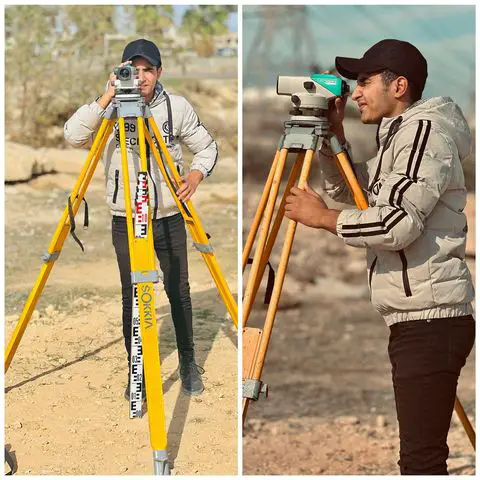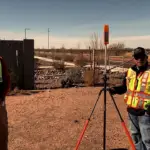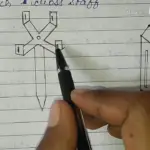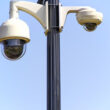The least count of theodolite is 20 seconds. For different types, the vernier theodolite is less precise with least count of 20 seconds while optical theodolite is more precise with least count of 1 second.
In comparison to total station it is less precise as the least count for total station is 1 second. The least count of prismatic compass is 30 minutes and that of surveyor’s compass is 15 minutes.
Here’s a comparison of least count of theodolite with other surveying instruments like total station, prismatic compass, and surveyor’s compass.
| Type of Instrument | Least Count |
| Total station | 1 Second |
| Theodolite | 20 Second |
| Prismatic compass | 30 Minute |
| Surveyors compass | 15 Minute |
The least count of optical precous theodolite is 1 seconds and thus it’s the most precise type of theodolite. The other type like vernier theodolite has a least count range of 10 to 20 seconds.
Also Read: Difference between Prismatic and Surveyor Compass – Types – Uses

What is theodolite?
A theodolite is a precision instrument used for measuring angles in the horizontal and vertical planes. It is primarily used in surveying and construction to measure angles for mapping and layout. Theodolites consist of a telescope mounted on a tripod, with a rotating base and graduated circles for measuring angles.
Meaning of least count
The least count for a theodolite can vary depending on the type and model of the instrument. For example, a basic builder’s theodolite may have a least count of 5 minutes of arc, while a high-precision engineering theodolite may have a least count of 1 second of arc.
This means that the latter instrument is capable of measuring angles with a precision of 1/3600 of a degree, while the former can only measure angles to the nearest 1/12 of a degree.
Also Read: Instruments used in chain surveying
Like Us on Facebook!
Uses of theodolite
Theodolites are used in a variety of fields, including surveying, engineering, construction, and architecture. In surveying, theodolites are used to measure angles and distances for mapping and land-use planning.
Subscribe Us on YouTube!
In engineering and construction, they are used to ensure that structures are built to precise specifications and that the alignment of roads and bridges is correct. In architecture, they are used to ensure that buildings are constructed on a level foundation and that the angles of walls and roof lines are correct.
Optical theodolite
An optical theodolite is a type of theodolite that uses a telescope to measure angles in the horizontal and vertical planes. It typically consists of a telescope mounted on a tripod, with a rotating base and graduated circles for measuring angles. The telescope is typically equipped with crosshairs or other aiming devices to aid in taking precise measurements.
The least count of an optical theodolite is the smallest division or graduation on the instrument’s scale, and it is used to determine the smallest angle or distance that can be measured. It is usually measured in units of arc seconds or minutes of arc.
The least count of an optical theodolite can vary depending on the manufacturer and model of the instrument. High precision optical theodolite can have a least count as low as 1 second of arc, while general purpose optical theodolite can have least count of 5 seconds of arc. This means that a high precision optical theodolite is capable of measuring angles with a precision of 1/3600 of a degree, while a general purpose optical theodolite can only measure angles to the nearest 1/60 of a degree.
Also Read: 300+ Civil Engineering Interview Questions You must Prepare for
Vernier Theodolite
A vernier theodolite is a type of theodolite that uses a vernier scale in addition to the main graduated scale to increase the precision of angle measurements. The vernier scale is a secondary scale that is used to read fractional parts of the main scale divisions.
The least count of a vernier theodolite is the smallest measurement that can be made with the instrument, and it is usually measured in units of arc seconds or minutes of arc. It is typically determined by the number of divisions on the vernier scale, as well as the precision of the main scale.
The least count of a vernier theodolite can vary depending on the manufacturer and model of the instrument. High precision vernier theodolite can have a least count as low as 5 seconds of arc, while general purpose vernier theodolite can have least count of 10 seconds of arc.
The least count of a theodolite is a measure of its precision and accuracy. It refers to the smallest division or graduation on the instrument’s scale, and is used to determine the smallest angle or distance that can be measured.
Selection of instrument based on least-count
The least count of a theodolite also plays a role in determining the accuracy of measurements taken with the instrument. For example, if a theodolite has a least count of 5 minutes of arc, it is not suitable for use in applications where high precision is required, such as in engineering or architectural work. However, it may be suitable for use in rough construction work or in land surveying where the precision requirements are not as high.
In conclusion, the least count of a theodolite is a measure of its precision and accuracy. Theodolites are precision instruments used for measuring angles in the horizontal and vertical planes and are primarily used in surveying and construction.
The least count for a theodolite can vary depending on the type and model of the instrument, and it plays a role in determining the accuracy of measurements taken with the instrument. It is important to choose the right theodolite for your specific application to ensure that your measurements are as accurate as possible.

















